What’s the easiest musical instrument to learn for adults? Let’s talk about that with specific examples.
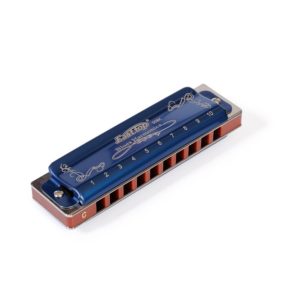
There could be many reasons you didn’t learn any instrument as a child. Maybe you couldn’t afford it, or you didn’t have any interest at the time.
However, it’s never too late to learn! Learning an instrument as an adult is fun, rewarding, and more comfortable than you think.
Playing an instrument comes with several health benefits, too!
So, What’s The Easiest Instrument to Learn?
By now, you should be eager to pick up and learn. We’ve shown you why you should learn how you should learn, and now we’re about to help you decide what you should learn.
Our next list will cover which instruments are the easiest to learn for adult beginners. Enjoy!
Ukulele

They aren’t miniature guitars! Ukuleles have their unique sound and a vast, loyal following across the globe. They were once heard almost exclusively in Hawaiian music and have now broken out into the mainstream.
The four nylon strings make the Ukulele less complicated to play than the guitar, and they’re made from nylon, which is kinder to your fingers. Being smaller, everything is closer together, making chords far more comfortable to play.
Guitar
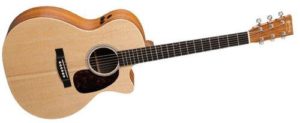
Guitars are fantastic instruments because you can learn the basics fairly quickly, yet they offer a lifetime of opportunity to improve your skills.
Bass guitars are generally considered the easiest to learn, as they have fewer strings, and you can play great-sounding bass riffs, which are incredibly simple and easy to learn.
Once you’ve learned the basic techniques involved with playing the guitar, you’ll be able to strum chords along to your favorite songs. With time and practice, you’ll be able to tackle the more advanced techniques.
Melodica / Pianica
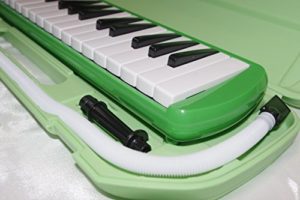
A reed instrument and a piano had a child. They called it the melodica (or pianica).
It’s simple to play – blow into the mouthpiece and play the keys like you would on a piano or keyboard. Unlike a piano, though, you don’t need to learn to play with both hands.
These quirky instruments have been used in mainstream music since the 60s.
Harmonica

The harmonica is deceptively easy to learn. It’s inexpensive and widely used across various genres such as jazz, folk, rock, and pop, making it a great choice if you’d like to learn to play music styles.
You can learn how to play harmonica – on a fundamental level – in around two weeks. Even basic harmonica sounds groovy as hell.
Bongos
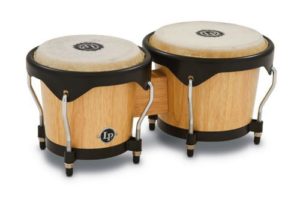
A popular instrument in Latin and African music, the bongos, is entertaining and easy to play! After learning the basic techniques, there is no right or wrong way to play the bongo.
You can experiment with different rhythm patterns and slap away to your heart’s content. As long as you play with a rhythm, it’s impossible to make the bongos sound bad.
Xylophone / Glockenspiel
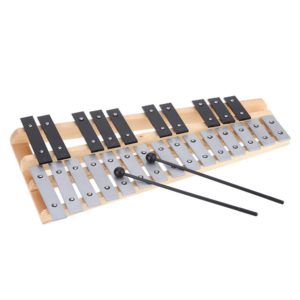
This instrument is nostalgic for most of us, having had, or at least played, a xylophone when we were kids. With a dreamy, angelic sound, the xylophone is easy to play and serves as an essential part of the orchestral rhythm section.
After you’ve mastered the xylophone, the African marimba or the balafon is all more advanced variations for you to play.
Tambourines
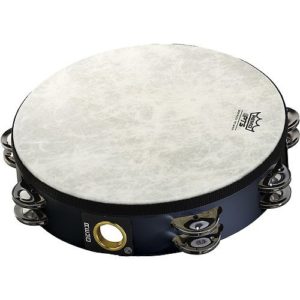
This reliable percussive instrument may not sound like the most impressive instrument on its own, but the tambourine shines as part of a rhythm section.
Very straightforward to play. You need to be able to shake and slap in rhythm. If you’re eager to play in a band, instruments like the tambourine serve as a great starter instrument.
Triangle
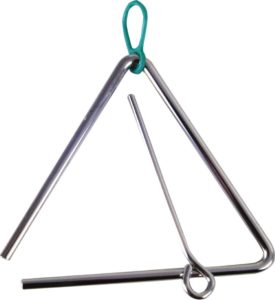
The triangle is the quintessential “I don’t play any instruments” instrument. I’m relatively confident that you can play the triangle already, giving you an idea of how easy it is to learn.
All you need is timing. While it’s true that you won’t have as much fun jamming with a triangle as you would with a guitar, they are popular elements in classical music and a great way into an orchestra or band.
What Are the Benefits of Playing Musical Instruments?
Aside from a sense of profound self-achievement and the ability to blow your friends and family away with your new talent, countless medical studies have proven that learning a musical instrument can have some positive effects both physically and mentally.
Improved Language Learning
As learning to read sheet music is similar to learning another language, the techniques and processes used will make any future language learning more comfortable and faster. You’ll be able to pick up Russian in no time! 🙂
Increased Memory Capacity
Learning to play songs has an even stronger positive effect on our ability not only to memorize new things but recall them when needed.
Learning those melodies, chords, and playing techniques will dramatically improve your memory capacity in the long run.
Physical Benefits
Learning to play the drums can be a highly physical experience, improving your endurance, fitness, and overall strength. Similarly, learning to play the guitar requires strength and flexibility in your fingers.
Don’t believe me? Go and shake the hand of an experienced guitar player. Please don’t say I didn’t warn you!
Sharper, More Accurate Hearing
As you learn a musical instrument, you’ll be required to critically listen to your performance and pay close attention to the song you are trying to play.
Listening intently to music will improve your brain’s ability to process audio. You’ll find your hearing becomes more accurate and sharper as you play more.
Confidence
Many people fail even to start learning a musical instrument, even if they want to. Even more, stop part-way through and never finish learning.
By successfully learning a new instrument, you’ll have far more confidence in your ability to challenge yourself, take up new hobbies, and succeed at everything you do.
How to Start Learning a New Musical Instrument
Once upon a time, you had to pay somebody to teach you. Now, we have a wide variety of ways to learn a new instrument. From the old school approach to self-teaching, here are the different ways to learn.
One on One Lessons
The most expensive, yet the most beneficial. Learning from a qualified teacher, one-on-one tutoring is perhaps the most effective way to learn a new instrument.
You’ll have someone there to teach you the correct techniques, so you learn an instrument the right way, without picking up any bad habits.
Group Lessons
Group lessons still provide you with the knowledge and expertise of an experienced musician, just in a less intimate environment.
You will spend far less time with the teacher and progress at a slower pace. The good thing is that group lessons are significantly cheaper and are a budget-friendly way to learn an instrument as an adult.
YouTube Tutorials
Incredibly cheap, usually even free. There are YouTube tutorials for just about anything these days. Music tutorials are there in the thousands to be used as a free resource to learn a new instrument.
There are some qualified teachers with professional-looking YouTube channels. They’ll provide you with all the knowledge you need, but you won’t get real-time feedback if you’re doing something wrong.
Online Courses
You can purchase online courses created by professional teachers and experienced musicians to take you from basic theory to advanced techniques.
The advantage here is that you can work at your own pace, although not having the financial commitment or obligation of attending lessons requires more self-motivation.